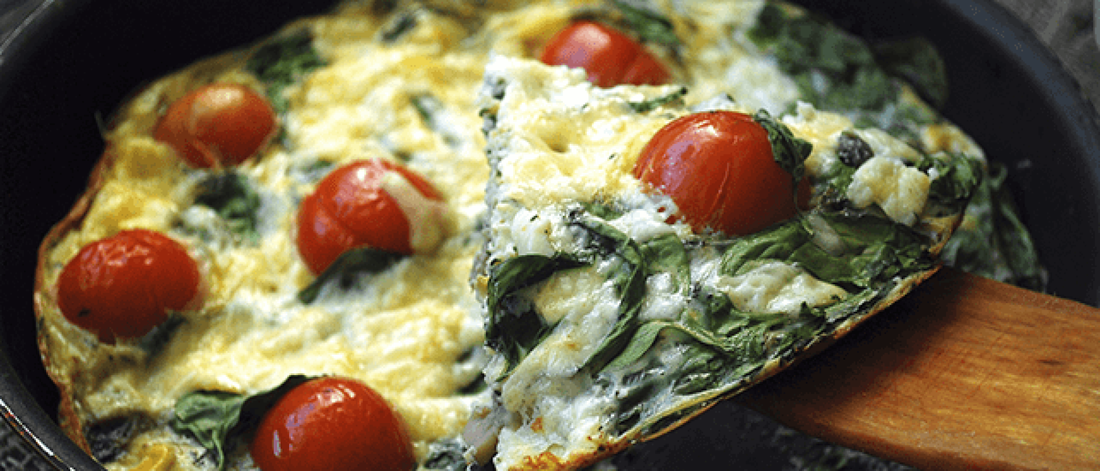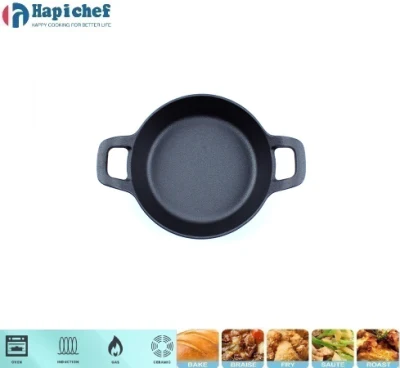Apr . 11, 2024 16:30
Back to list
Health Benefits of Cooking with Cast Iron-cast iron casserole dish
Health Benefits of Cooking with Cast Iron

Ever been curious about ways to prepare food that are conducive to healthy eating? Well, it turns out, you can pair your nourishing foods of pleasure with cast iron cookware to increase health benefits. With cast iron, you can not only produce fantastic one-pot wonders on the stove; you can also meet high standards for making tantalizing tarts, cobblers, and other creations in the oven. Cast iron cookware are inexpensive, non-stick, hold a high heat capacity, free of chemicals, add trace amounts of iron to your food, and last—well—forever.
Cast iron also retains heat so efficiently and has such a high heat capacity that you use less fuel when you cook with it. Now that’s a pan with a purpose!
Iron transports oxygen through the body, as a part of hemoglobin in the blood and part of myoglobin in the muscles. According to the National Institute of Health, the recommended dietary allowance (RDA) for iron for non-vegetarian pre-menopausal women is 18 mg a day. The RDA for non-vegetarian men and post-menopausal women is 8 mg a day. With that said, foods cooked in cast iron may vary in iron content based on the age of the skillet and the amount of time the foods are heated. Newer skillets release higher amounts of iron. This can be especially advantageous for people at high risk of iron deficiency or anemia, including women of childbearing age, pregnant women, older infants and toddlers, and teenage girls.
On the other hand, ingesting too much iron can be risky for those with a hereditary metabolic disorder called hemochromatosis or children under 3 years of age. The metabolic condition occurs when the body loads too much iron from the diet and it is unable to remove the extra load. According to the Iron Disorders Institute, it affects as many as one million Americans—many of whom are unaware. This disease is characterized by fatigue, weakness, joint pain, and abdominal pain, as described by the Center for Disease Control (CDC). Always check with your doctor before switching over if this is a concern.
Discovering ways to cook with the durable and versatile cast iron can be very conducive to healthy eating. If it’s been a while since you’ve whipped out your skillet from the cooking cupboard or if you’re a cast-iron cooking connoisseur, here’s a great recipe to put its unique benefits back to good use
Versatility and Durability
The versatility and durability of cast iron cookware make them well-crafted kitchen commodities that get better with age. It takes some intentional maintenance to keep these kitchen tools in good working order; however, the results far outweigh the effort it takes to keep them in tip-top cooking shape. You can purchase a cast iron skillet that has been pre-seasoned, or you can season it yourself by coating the inside and outside of the skillet with cooking oil and heating it in a warm oven for at least an hour, then repeating this process a few times before first use. Thereafter, oiling the skillet each time you cook continues to season and build its non-stick surface, filling in the microscopic pores that are part of the cast iron surface.Cast iron also retains heat so efficiently and has such a high heat capacity that you use less fuel when you cook with it. Now that’s a pan with a purpose!
No Nasty Chemicals
With cast iron, you also avoid exposure to nasty chemicals in typical non-stick pans, which emit toxic fumes when overheated and contain perfluorocarbons (PFC). These chemicals are associated with developmental problems, liver damage, cancer, and early menopause, according to a 2011 study in the Journal of Clinical Endocrinology & Metabolism.3PCS Pre-Seasoned Cast Iron Cookware Cast Iron Skillet Frying Pan
Iron Supplementation
Nutritionally speaking, cooking with cast iron can increase iron content in food—especially acidic food like tomato sauce. A study published in the Journal of the American Dietetic Association found that the iron content in 100 grams of spaghetti sauce jumped from 0.6 mg to 5.7 mg after being cooked in a cast iron pot.Iron transports oxygen through the body, as a part of hemoglobin in the blood and part of myoglobin in the muscles. According to the National Institute of Health, the recommended dietary allowance (RDA) for iron for non-vegetarian pre-menopausal women is 18 mg a day. The RDA for non-vegetarian men and post-menopausal women is 8 mg a day. With that said, foods cooked in cast iron may vary in iron content based on the age of the skillet and the amount of time the foods are heated. Newer skillets release higher amounts of iron. This can be especially advantageous for people at high risk of iron deficiency or anemia, including women of childbearing age, pregnant women, older infants and toddlers, and teenage girls.
On the other hand, ingesting too much iron can be risky for those with a hereditary metabolic disorder called hemochromatosis or children under 3 years of age. The metabolic condition occurs when the body loads too much iron from the diet and it is unable to remove the extra load. According to the Iron Disorders Institute, it affects as many as one million Americans—many of whom are unaware. This disease is characterized by fatigue, weakness, joint pain, and abdominal pain, as described by the Center for Disease Control (CDC). Always check with your doctor before switching over if this is a concern.
Discovering ways to cook with the durable and versatile cast iron can be very conducive to healthy eating. If it’s been a while since you’ve whipped out your skillet from the cooking cupboard or if you’re a cast-iron cooking connoisseur, here’s a great recipe to put its unique benefits back to good use
Latest news
-
Why Every Kitchen Needs a Casserole Cast Iron DishNewsJun.24,2025
-
Experience the Tradition and Quality of Cast Iron CookwareNewsJun.24,2025
-
Double Sided Cast Iron Grill PanNewsJun.24,2025
-
Cast Iron Dutch Ovens You’ll Actually UseNewsJun.24,2025
-
Buy Cast Iron Griddle for Everyday CookingNewsJun.24,2025
-
Barbecue Iron Grill Cooking PowerNewsJun.24,2025
-
Standard Product Lines from Cast Iron Cookware SuppliersNewsJun.11,2025

